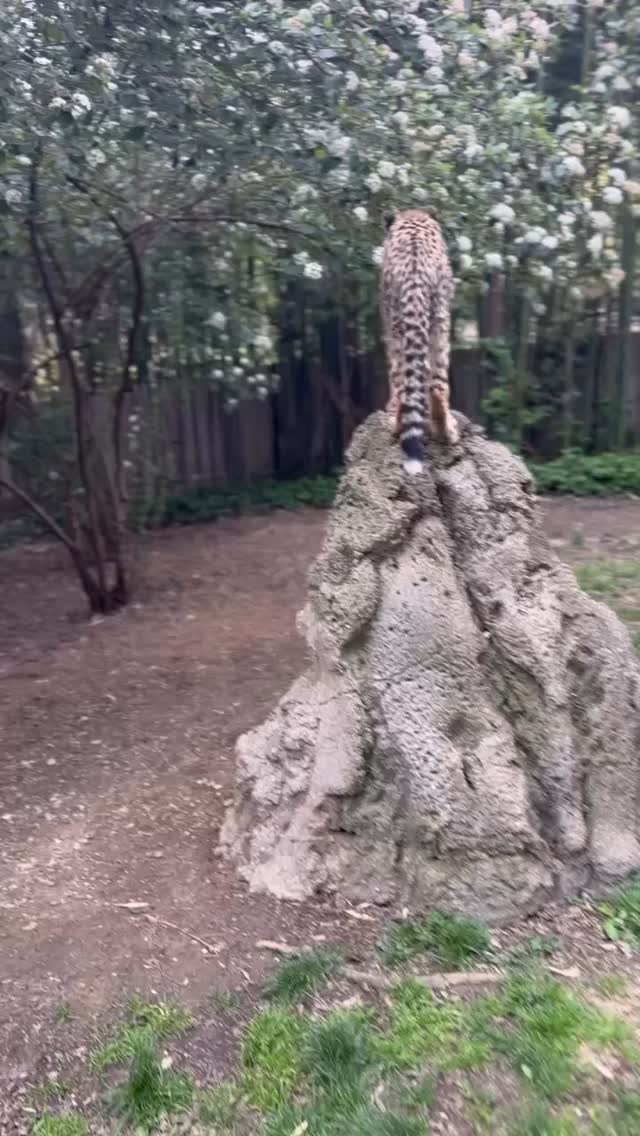- Cheetah behavior and natural habitat
- Importance of termite mounds in the savanna ecosystem
- Observation techniques of cheetahs for hunting and safety
- Role of zoos in conservation and education
- Significance of public engagement in wildlife conservation
Cheetah behavior and natural habitat
Cheetahs, known for their remarkable speed and agility, are a fascinating species native to the African savanna. They thrive in open landscapes where their ability to run at incredible speeds is an evolutionary advantage. Typically, cheetahs inhabit areas ranging from dense forests to wide-open plains, but they are most commonly associated with the broad savannas of Africa. These environments offer them the visibility and space needed to hunt effectively.
Cheetahs rely heavily on their keen sight to locate prey, and their slender bodies are adapted to maximize speed rather than endurance. Unlike other big cats, cheetahs hunt primarily during the day, using the daylight to detect movements of potential prey. Their distinct black “tear marks” running from the eyes down to the mouth reduce sun glare and enhance focus on their targets. This adaptation is crucial for their survival in the savanna’s challenging environment.
Importance of termite mounds in the savanna ecosystem
Termite mounds are a unique feature of the African landscape, playing a vital role in the ecosystem. These mounds, constructed by termites using soil, saliva, and feces, create durable structures that can reach several meters in height. They contribute to the aeration and enrichment of the soil, fostering plant growth that supports the entire food chain.
For cheetahs, termite mounds serve as excellent vantage points. By climbing these structures, cheetahs like Zola can gain an elevated view of the surrounding area. This behavior allows them to spot both prey and potential predators from a distance. Termite mounds thus assume critical importance, enabling cheetahs to strategically plan their movements. Besides providing physical benefits, these structures also support biodiversity by offering habitats for various organisms.
Observation techniques of cheetahs for hunting and safety
Cheetahs are solitary hunters, relying almost exclusively on their speed and acute vision to catch prey. By using natural vantage points like small hills and termite mounds, they can meticulously scan the horizon. This technique is vital in detecting unsuspecting prey such as antelope, gazelles, and warthogs.
Once prey is spotted, cheetahs initiate a well-calculated approach to reduce distance without alarming their target. The final chase is a display of breathtaking acceleration, where cheetahs can reach speeds of up to 60 miles per hour in mere seconds. Due to their lightweight structure, cheetahs can maneuver rapidly but only sustain such speeds for short bursts.
In addition to hunting advantages, maintaining a heightened perspective helps cheetahs to be vigilant against larger predators like lions and hyenas. This constant balance between pursuing prey and avoiding threats underscores the adaptive intelligence of these remarkable animals.
Role of zoos in conservation and education
Zoos play an essential role in wildlife conservation and education, serving as custodians of biodiversity. Institutions like the zoo hosting Zoo Babies leverage public interest to raise awareness about the intricacies of animal behavior and conservation challenges. By providing a platform for people to see animals like cheetahs up close, zoos foster an understanding and appreciation of wildlife that is crucial for conservation efforts.
Cheetah populations face significant threats from habitat loss, human-wildlife conflict, and limited genetic diversity. Zoos contribute to the conservation of cheetahs through captive breeding programs, researching their needs, and educating the public. These endeavors not only help preserve existing populations but also work towards sustainable coexistence between humans and wildlife.
Significance of public engagement in wildlife conservation
Engaging the public in wildlife conservation is not merely a task for scientists and researchers. It requires collective effort and awareness. Events like Zoo Babies provide unique opportunities to engage a broader audience. By creating emotional connections and fostering curiosity, such platforms cultivate future generations of conservationists who may influence policy and societal behaviors.
Public involvement also translates into financial support for conservation initiatives. Through donations, memberships, and community activities, individuals can actively contribute to the welfare of species like cheetahs. Increasing public support enhances the reach and efficacy of conservation programs, ensuring a holistic approach to preserving our planet’s biodiversity.
In summary, Zola’s behavior on the termite mound is more than just a captivating scene; it’s a demonstration of the complex interplay between a species and its environment. This spectacle, mirrored in both wild and controlled settings like zoos, sparks curiosity and educates a global audience about the delicate balance underpinning natural ecosystems. Through understanding and active participation, we all have a part to play in ensuring the survival of these incredible creatures and their habitats.
*****
Source Description
Zola is queen of the termite mound!
She’s demonstrating a natural behavior! Cheetahs like to get up high on small hills or termite mounds on the African savanna to survey the area. They can see clearly up to 3 miles watching for predators or their next meal!
Visit the cheetah cubs all month long during Zoo Babies @generalelectriccreditunion


